While ‘seeing things’ is an integral part of Strange Days, and the slang includes ‘piece of eyefuck’ (not in a fun or positive way!), only half the time does that seeing involve literal eyes. The other times involve electronic impulses projecting what someone else saw directly into someone’s brain, so they’re ‘seeing’ with eyes closed; if you open your eyes while wearing the projector helmets you’ll “see double” and that’s even more sickening and disorienting.
All this embedded in the imagery and themes meaning the way the film shows eyes — and specifically when it shows not eyes — is important.
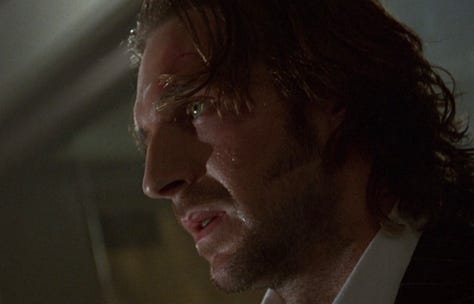
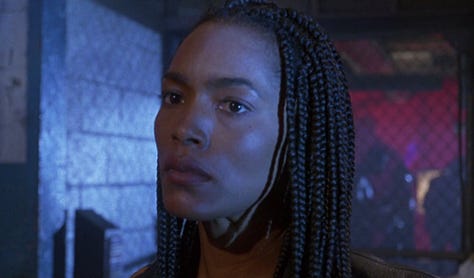

[some mild spoilers follow within photos]
Technical Highlights
Strange Days uses wide shots for a lot of action scenes, while for dialogue and similar scenes it often uses a lot of quite-close-ups.
It’s not exactly typical for an anamorphic film (2.39:1 aspect ratio, or quite-widescreen) to shoot so many, many single closeups; in fact, we talked about how Ang Lee doesn’t like to do so, and when shooting wide format he uses two-shots or otherwise tries to ‘fill’ the frame.
Meanwhile, Strange Days uses these shots to better draw our attention to eyes, especially those of Lenny (Ralph Fiennes) and Mace (Angela Bassett).
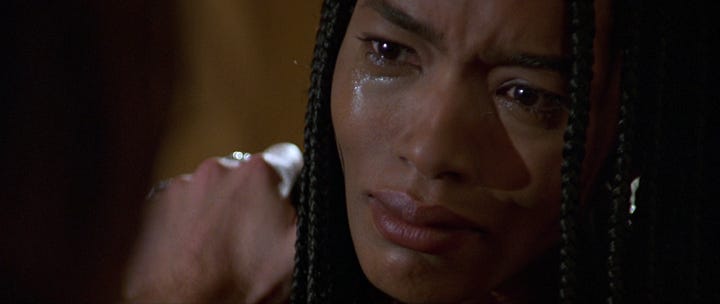

Eyelights
This thread takes a good look at why eyes in classical cinema often look different to eyes in modern cinema. Within Strange Days, plenty of closeups and well-lit eyes in dark, hazy environments make them pop.
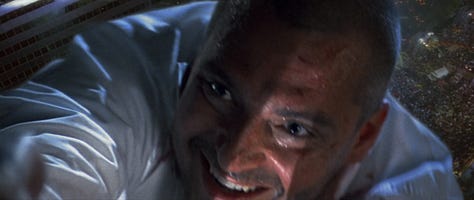

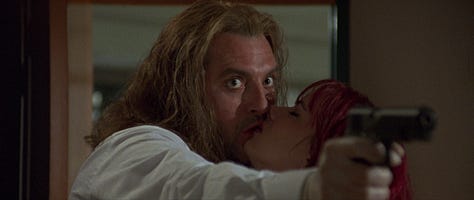
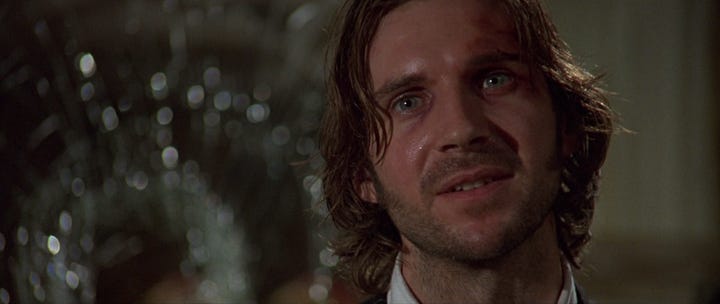
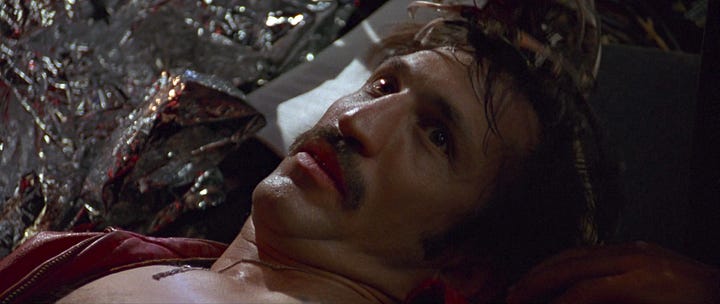
Style-eyes
The film uses not-eyes to suggest eyes, particularly when dealing with the two cops (played with perfect insanity and sleaze by Vincent D'Onofrio and William Fichtner). These excellent red-accented binoculars should get props department a raise! And the way D'Onofrio carries his pistol-and-flashlight in front of his face makes it looks like he is waving a second pair of eyes around.
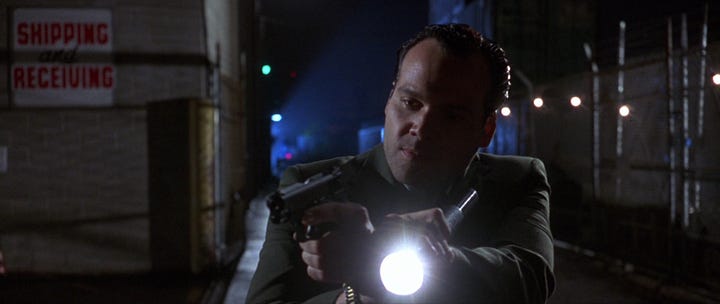
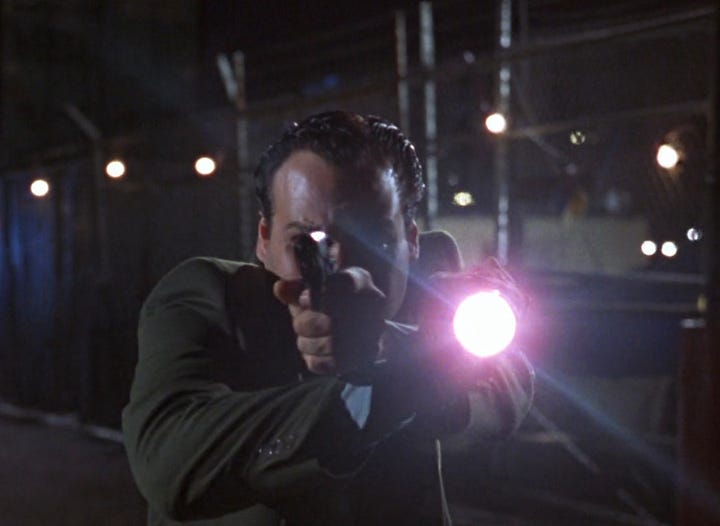
Finally, when the police commissioner finally ‘sees’ what they are doing, the way he holds the small, round disc with a hole for the ‘iris’ for his revelation suggests a ‘third eye’ or way of seeing.
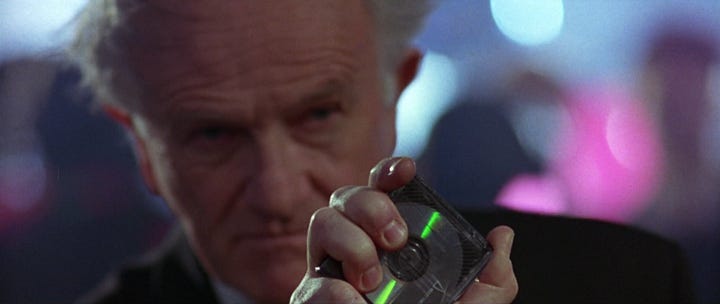
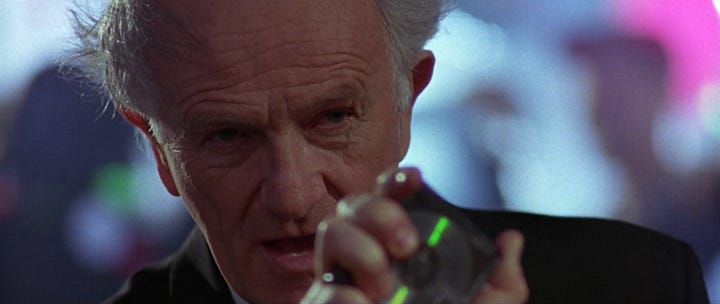
Hyper Style-eyes
A few sequences in the film take us inside the POV of a characters whose brain has been ‘fried,’ and represent it with hypercoloured, heat-vision-esque shots.
Though stylistically different, these shots are creatively akin to the very first shots to use digital image processing, which also represented a characters’ warped and unusual POV, and Strange Days’s final scene calls back to the look of these shots its confetti-and-fireworks display
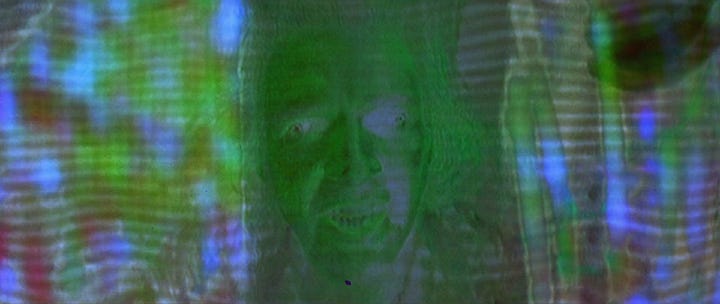
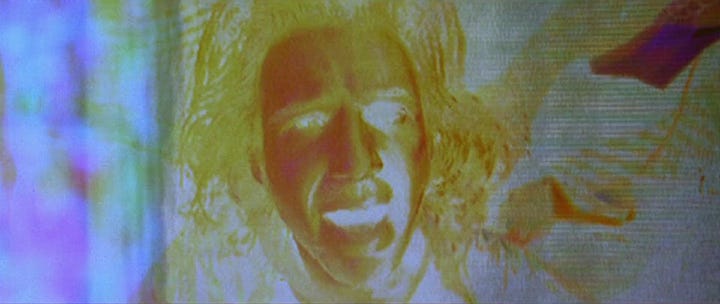
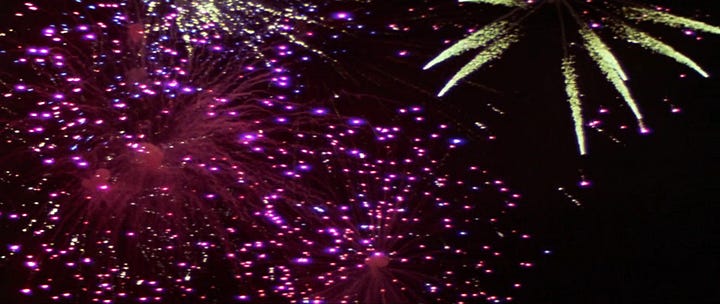
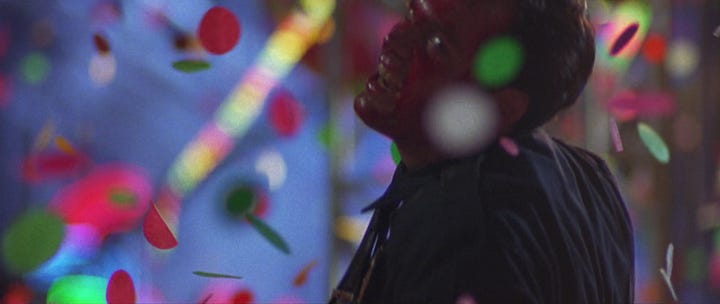
Billboard and Rearview Mirrors
A billboard to suggest ‘looking over you’ and a rearview mirror are both fairly classical shots (just ask F. Scott Fitzgerald and any film student ever).
But they’re still effective; the former with an unnamed model looking down over a car impound lot, the latter also has a twofer with a lovely rack focus.
Extras
Several shots of revellers and other extras focus on eyes whether with makeup, light, props and wardrobe, or staging.

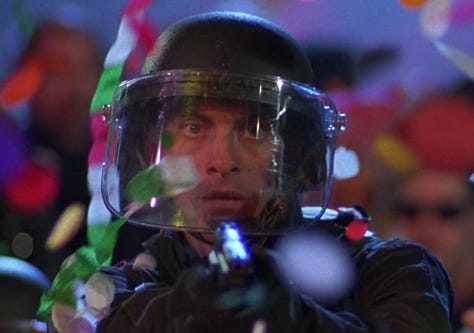
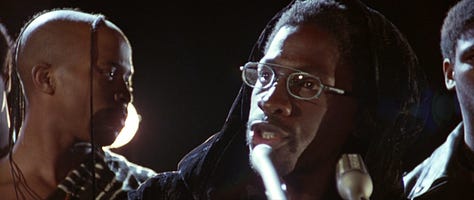
Takeaways
Perhaps it’s for the best that one of the only things this film didn’t foresee was the prevalence of plastic “2000” novelty glasses to celebrate the incoming millennium . . .




